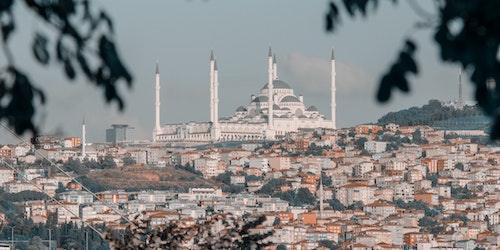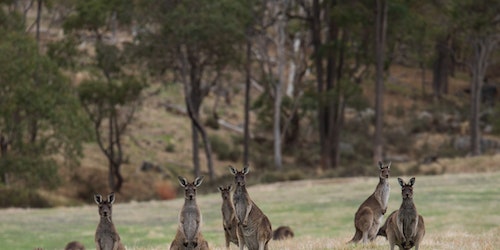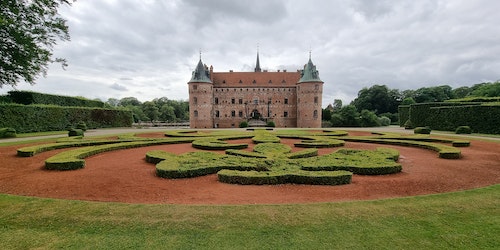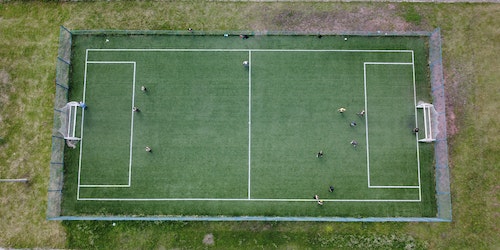From the start Izmir appears as though some other current Turkish city, thickly populated with modest engineering. However when it was Turkey’s most cosmopolitan city – – and that authentic cachet can in any case be seen as tucked away among Izmir’s roads. Tone the clock down over 100 years and you’d find rich Levantine, Greek, Turkish and Armenian families promenading along Izmir’s waterfront in the most stylish trends from Paris. They drank lager imported from Munich or mixed drinks at rich bars, and sent their youngsters to chapel run schools to be taught in French and Latin. Izmirites were the embodiment of complexity and elegance, yet their way of life reached a sudden conclusion in 1922 when brutal flames tore through the roads.
Dream City
The cutting edge city extends around the Bay of Izmir yet begun life in old Smyrna, situated in the Bayraklı area. Previously a town, it’s presently an archeological site. As indicated by legend, Alexander the Incomparable was out hunting on the slants of neighboring Mount Pagos one day and halted for a rest. Two enemies showed up in a fantasy and requested that he construct a city where he lay. Similar to the standard, Alexander talked with the prophet Apollo who, in full real estate agent mode, told him: “Smyrnians who get comfortable the lower regions of Pagos slope close to the Holy Meles Stream will be multiple times more joyful than previously.” Another downtown area was laid out on the mountain in the fourth century BCE thus.
Or on the other hand so they say. Whatever reality behind the story, Alexander the Incomparable had a major effect. The Public square of Smyrna was developed on his orders. On finishing it was four stories high, however just the cellar actually exists. Guests today can see lines of rich stone curves tossing shadows on the ground, featuring the mechanics of a perplexing water framework. The underpinnings of the basilica, a kind of open corridor, contain specialties finished with spray painting, as well as engraved and painted pictures portraying Roman regular routine. A short move to the open ground above gives an extraordinary view across lush fields that once clamored with action and exchange.
The Golden Age
Izmir was one of the stops along the Silk Street however it truly made its mark in the seventeenth hundred years. Different conflicts made Smyrna Quay the most secure port for shipping silk from Iran, drawing in traders from everywhere the world. The Onassis tribe exchanged tobacco while other Rum (as Turkish-conceived Greeks were known) made their fortunes selling Smyrna’s renowned tacky figs.
RTwo Greek-claimed retail chains sold all that possible and worldwide banks had branches around. Levantine families, for example, the Whitalls and Girauds possessed production lines and mines and the Armenians were appreciated for their strong hard working attitude. The Americans set up a different province, somewhat inland, called Heaven, while Jews and Turks lived in nearby areas on the water. At some random time many dialects could be heard in the roads, including English, German, and, surprisingly, Hindi.
“With its 8,500-year history, Izmir is quite possibly of the most seasoned settlement in the Levant and Turkey, and has facilitated various civic establishments since forever ago,” says Bülent Senocak, an Izmir creator and student of history. “It is totally important to see the authentic structures in the downtown area bearing the hints of this multicultural environment and the verifiable Kemeraltı market, which was laid out before numerous urban communities in Europe.” The marketplace is where everything occurred, and as Senocak says, is as yet worth a visit today. It’s comprised of various different han, motels which once offered convenience and capacity for products. They’re situated on little covered roads that lead into each other.
One previous motel, Kızlarağası Hanı, dates from 1744 and has since been changed over into trinket shops that sell pretty things like hand painted pottery and Ottoman-propelled silver adornments. It’s a decent spot to get a nazar. It’s accepted these blue and white glass dots avert detestable and the ones sold in Izmir are made in the suitably named Nazarköy (Hostile stare Town). The Bakır Bedesteni, or copper marketplace, at first housed the city’s best copper studios yet later turned into the spot to purchase silk. At its pinnacle, many parades would show up every day. Merchandise were set away or offered to shops in the marketplace, creatures were corralled on the ground floor and the vendors snoozed rooms higher up.
Camel prepares never again show up here, however the marketplace region gets pretty occupied. A break can be taken in Kahveciler Sokağı, a road where the Turkish espresso is made the customary way over hot coals in lengthy dealt with copper cezve espresso pots. For an additional cut of history, it merits searching out Izmir’s Havra Sokak, or temple road. There are four places of worship concealed among the bunches of shops. Initially there were nine inside the marketplace, out of a sum of 34 in the city. The most seasoned were worked by Sephardi Jews, removed from the Iberian Promontory during the fifteenth century Examination. Some have been in help for over 300 years and a rebuilding project is in progress to open more as exhibition halls.
End Of An Era
While life toward the start of the twentieth 100 years in Izmir was, for additional rich occupants, a spin of sumptuous picnics, sailing parties and lavish meals, that all different in September 1922, when Turkey’s conflict of freedom showed up close to home. The deliberate passage into the city of the Turkish armed force was immediately supplanted by mayhem. Directed Greek troopers overflowed into the city, heading for the waterfront where maritime boats held back to move them home. Turkish-conceived Greeks from across Anatolia, dreading revenge, followed intently behind them. Inside the space of days large number of individuals were stuck on the quay, searching an exit plan. A progression of flames broke out that consumed for a really long time. At the point when the remainder of the blazes was stifled, little was left of the once dynamic objective known as Smyrna.
Numerous structures that got away from burning were subsequently destroyed, after they were left unfilled and fell into decay as a result of a populace trade in 1923. This understanding saw Rum individuals localized to Greece and Turkish Greek nationals moved to Turkey. Numerous Levantine families with European travel papers and second homes somewhere else, moved. Few returned, profoundly changing the city’s personality. Anyway Izmir is strong. Like the phoenix, the city is on the ascent. Smyrna Quay, where boats once left weighed down with fascinating products to sell in Europe has been reevaluated as the Kordon promenade. Guests can walk, run or bicycle along the shores of the bay from Alsancak to Konak Meydanı, an enormous square. There are a lot of cafés to attempt en route and a few unique historical centers to visit, including one devoted to Mustafa Kemal Atatürk, the country’s organizer.
Local Legends
Common misconception has it that Izmir’s Konak Wharf was planned by Gustave Eiffel, of pinnacle popularity, in 1890. More probable it was crafted by somebody in his firm, however the steel structure is exceptionally suggestive of his hand. Which began life as a traditions house is presently a mall with a la mode café neglecting the water. The exceptionally elaborate Abdul Hamid II clock tower becomes the dominant focal point in Konak Square. Worked in 1901 for an Ottoman Ruler, it was planned by French draftsman Raymond Charles Péré.
In spite of their experiences, the 82-foot structure looks neither Turkish nor French. Péré was impacted by structures in North Africa and Andalusia, so every one of its four levels is a whirlwind of sections, decorated capitals and horseshoe-molded curves – – ideal for Instagram presents. A little over a mile further south, one of Izmir’s children has been given his own road. Naturally introduced to an enormous Jewish family in 1921, David Arugete deserted his point of turning into a lawful representative in the wake of learning guitar and beginning to sing. Calling himself Darío Moreno, he cut his teeth performing at Jewish celebrations prior to proceeding to win cross country distinction.
He’s most popular for his 1962 recording of “Ya Mustafa,” a melody composed by Egyptian writer Mohamed Fawzi. It was enormously famous during the 1950s and 1960s with adaptations delivered in Arabic, French, Spanish and a few different dialects. In the end Moreno purchased a house in the more upscale Jewish quarter of the city on a road named Asansör Sokak, which took its name from the Turkish for lift. The road houses a real lift, worked in 1907 by a Jewish dealer, which associates it to an upper segment of the area. During The Second Great War, the construction housed a club, photograph exhibition and film. Today there’s a bistro, bar and café. Guests can ride to the top and partake in the view, previously or after they look at the customary houses changed over into brightly painted bars and bistros on Dario Moreno Sokağı, as Lift Road is presently called.
Back In Time
A roadtrip to the remaining parts of the old Greek city of Ephesus, when the business focus of the Mediterranean, ought to be high on the plan for the day for anybody visiting Izmir. Here they can step roads utilized by the antiquated Greeks, move to the highest point of the extraordinary theater, wonder about the library of Celsus, and stroll past mosaics in what were once normal rural houses when the city was essential for the Roman realm. Need more? Numerous sculptures and curios found at the site should be visible in the Ephesus Archeological Historical center, while back in Izmir, there’s a marble sculpture of Androklos, Ephesus’ organizer, in the Prehistoric studies and Ethnology Gallery.




